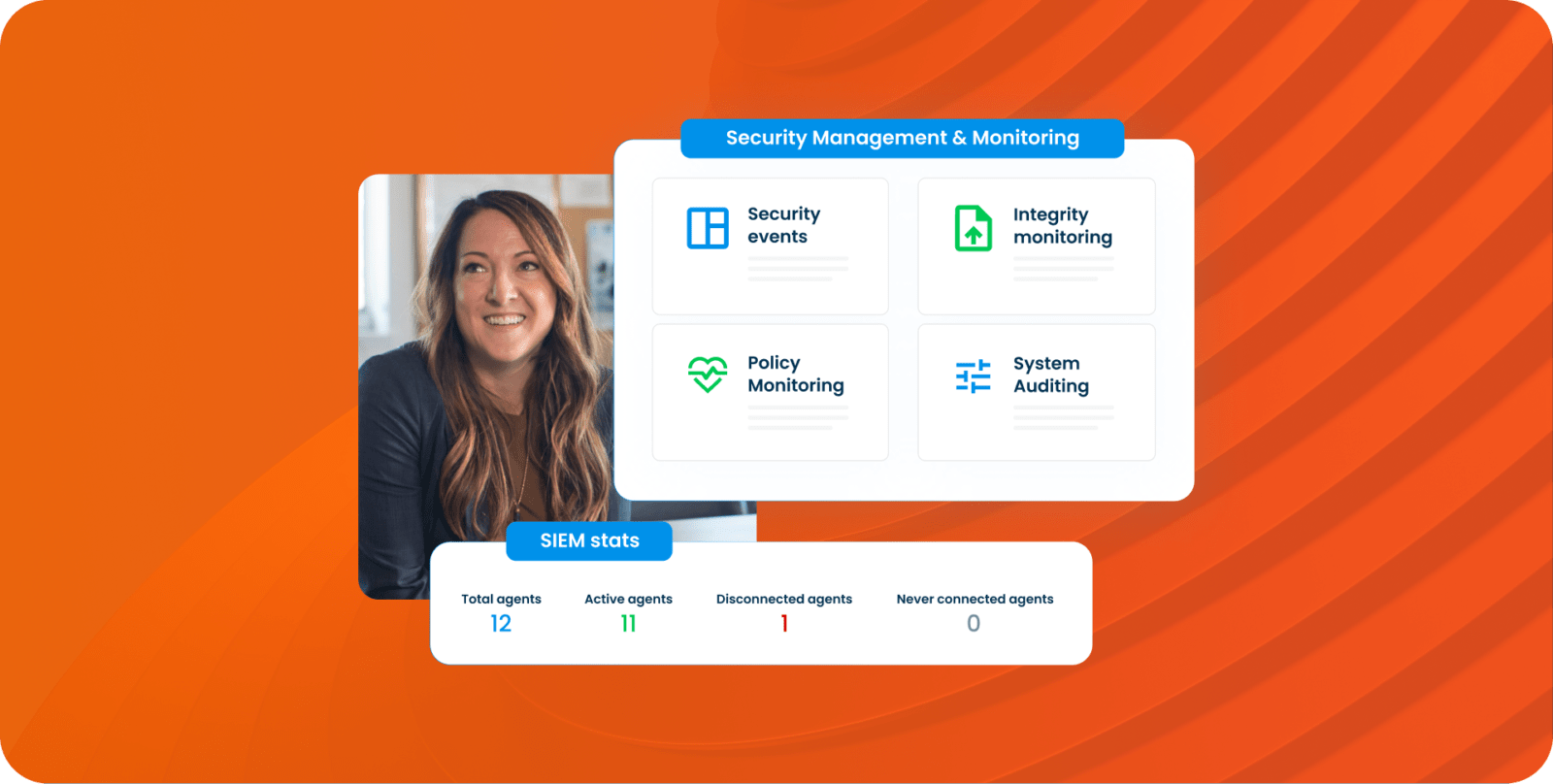Learn how to plan for a successful cloud migration process, from start to maintenance
Two-thirds of senior executives surveyed by Splunk and Harvard Business Review reported that their companies are accelerating cloud adoption. Essentially all organizations now depend on cloud computing to some extent. More and more businesses are making full-scale moves to the cloud every day — so if you’re feeling adrift in a sea of cloud-related decisions, at least you aren’t alone.
All companies doing business in and around the cloud must have at least a working understanding of the cloud migration process. Here’s what you need to know to start planning and preparing for a cloud transition within your own enterprise, and how to ensure it will set your company up for success for years to come.
Jump to a section…
What Are the Benefits of Cloud Migration?
How to Build Your Cloud Migration Process Plan
What Are the Costs Involved in the Cloud Migration Process?
What Are the Top Cloud Migration Tools?
What Are the Leading Cloud Migration Services and Solutions?
What Are Cloud Migration Consultants?
How to Accelerate the Cloud Migration Process
What Is Cloud Migration?
A cloud migration process is the method used to transition part or all of an organization’s IT architecture from an on premises or previous cloud environment to a new cloud environment. Cloud migrations can cover every element of the tech stack, including data, workloads, applications, servers, and beyond. To ensure they can successfully navigate this complex process, many companies invest in risk mitigation tactics such as developing a cloud migration project plan, using cloud migration tools, and hiring experienced cloud migration consultants.
One of the most effective tactics is using automation to accelerate the cloud migration process. Some automation solutions, such as DuploCloud, help organizations cut the time and money required to transition by as much as 80%. Read our latest whitepaper to learn how you can start leveraging this new approach.
What Are the Benefits of Cloud Migration?
There’s a reason why Garter forecasted global public-cloud spending to hit $500B by the end of 2022: Cloud-based IT has numerous advantages. These benefits include greater flexibility, lower costs, enhanced performance, automated compliance, and simplified resource management.
- Greater flexibility: Cloud IT architecture is significantly more scalable and agile than on premises assets, allowing IT teams to rapidly spin up or down resources according to an organization’s evolving needs.
- Lower costs: With cloud IT architecture, organizations only need to pay for the storage and applications they actually use — minimizing spending. On premises assets, on the other hand, are an ongoing expense unless decommissioned.
- Enhanced performance: Cloud IT architecture allows organizations to split storage and processing across multiple resources, improving speed and reducing downtime.
Learn about two more ways cloud migration helps businesses in The 5 Biggest Benefits of Migrating From On Premise to the Cloud.
How to Build Your Cloud Migration Process Plan
Whether your organization’s IT infrastructure has decades of history or is still relatively new, you’ll benefit from planning out your cloud migration process ahead of time. The first step is to segment out which pieces of your infrastructure, data, and applications will make the transition and how: the strategies and categories laid out in Gartner’s guide to cloud migration are still a handy way to structure your thinking more than a decade after its publication.
From there, it’s time to build your cloud migration plan. Here are six steps to follow as you get started:
- Define objectives: Lay out your goals and define success for this migration. This step will inform the choices you make through the rest of the process.
- Create a roadmap: Define deadlines for each part of the process, including both short-term and long-term goals. Decide which apps and processes will migrate first and which will join them in the cloud later.
- Choose your strategies: Using the previous two steps to guide your planning, decide which of the strategies mentioned above you will use for each part of your existing infrastructure.
- Determine your destination: The cloud is a big place. Do you want to use public servers, which will save money, or opt for the greater cost and increased privacy of private servers? Be sure to consider hybrid or multi-cloud setups as well.
- Start migrating: It’s time to put your plan into process. Begin to follow through on your strategies and roadmap, keeping your overall objectives in mind for any questions that arise in the moment.
- Monitor and optimize: Keep an eye on your resource allocation as your new cloud infrastructure begins “business as usual.” Be sure to address any unexpected performance fluctuations before they can disrupt your business.
Find more guidance in our guide, 7 Essential Cloud Migration Strategies (And How to Build A Cloud Migration Plan).
What Are the Costs Involved in the Cloud Migration Process?
As beneficial as many companies find transitioning to the cloud, the process does necessitate some new expenses. Here are a few of the costs any migration plan should account for:
- Refactoring: Replicating your tech stack in the cloud can be expensive, especially if your architecture is highly customized. To ensure you don’t get caught off guard, do an in-depth assessment of the complexity of your existing IT systems.
- Hosting: Each major cloud service provider (CSP) has a broad set of pricing options that vary depending on your needs, from storage requirements to data request volume. Doing an assessment — this time of your projected usage — will help you get a handle on your hosting expenses.
Read How Much Does Cloud Migration Cost? to continue exploring the financial implications of transitioning to the cloud.
What Are the Top Cloud Migration Tools?
Another key to a successful transition is choosing the right cloud migration tools. Fortunately for many companies looking to make the leap into the cloud, the market is full of proven tools from DuploCloud, Amazon, and Microsoft.
DuploCloud
DuploCloud is an innovative cloud migration tool that uses automation to significantly reduce the time and costs associated with this process.
Advantages:
- DuploCloud makes it easy for organizations to map on premises architecture onto the cloud using a no-code web-based UI.
- DuploCloud leverages automation to speed up the cloud migration process.
- DuploCloud reduces downtime and boosts reliability even while migrating large data sets.
Disadvantages:
- DuploCloud’s migrations tools are part of their subscription package, meaning some companies may have budgetary concerns.
AWS Migration Services
What it is: AWS Migration Services helps organizations move their IT assets to the AWS cloud.
Advantages:
- AWS Migration Services can migrate on-premises, virtual, or cloud IT assets.
- AWS Migration Services supports both homogeneous and heterogeneous database migrations.
Disadvantages:
- AWS Migration Services only works for AWS cloud migrations.
Azure Migrate
What it is: Azure Migrate is a cloud migration tool Azure customers can use free of charge.
Advantages:
- Azure Migrate can be used to move data and applications to the cloud.
- Azure Migrate provides a robust management dashboard.
Disadvantages:
- Azure Migrate only works for Azure cloud migrations.
To get more detail on how these three solutions stack up, read The Top 3 Cloud Migration Tools Speeding Up the Modernization Process.
What Are the Leading Cloud Migration Services and Solutions?
Organizations may use a variety of services and solutions during a cloud migration, each tailored to a different scenario or component of their IT architecture. Here is a list of leading providers in each category.
- Guided Migrations: Companies looking for more support with this process might want to consider 2nd Watch, a guided migration service specializing in fast and efficient lift-and-shift initiatives. The company can handle migrations across projects of various scopes, hybrid or multi-cloud environments, and major platforms.
- Business application migration: Infosys provides robust migration support to organizations transitioning virtual servers, databases, ERP systems, etc., to applications on the major cloud platforms. Their service follows a proven process that accelerates deployment, maximizes efficiency, and ensures the dependability of the resulting cloud-based architecture.
To review five more options, read 7 Cloud Migration Services & Solutions That Help Ensure a Smooth Transition.
What Are Cloud Migration Consultants?
Cloud migration consultants are outside experts that help companies navigate the cloud migration process. This support usually spans the entire process and can include everything from creating the cloud migration checklist to executing the individual steps involved in the transition. The rising adoption of cloud-based architecture has led many leading brands in the consulting industry — such as PwC, Accenture, and Deloitte — to provide these services.
There are several benefits to working with a consultant during the cloud migration process. These experienced pros can improve the migration strategy, significantly reduce overhead, and cut down on the costs of transitioning.
To learn about the best migration consultancies, read 3 Cloud Migration Consultants That Can Help You Transition.
How to Accelerate the Cloud Migration Process
While speed is critical to successfully navigating this transition, 75% of data teams believe outdated approaches are costing them time and money during the migration process. To avoid this quagmire, many companies are turning to emerging methods, like automation, which can cut the time and cost of a migration project by as much as 80%.
Learn more about this powerful approach by reading our white paper, “Dissecting Cloud Migrations and the Role of Automation.”









